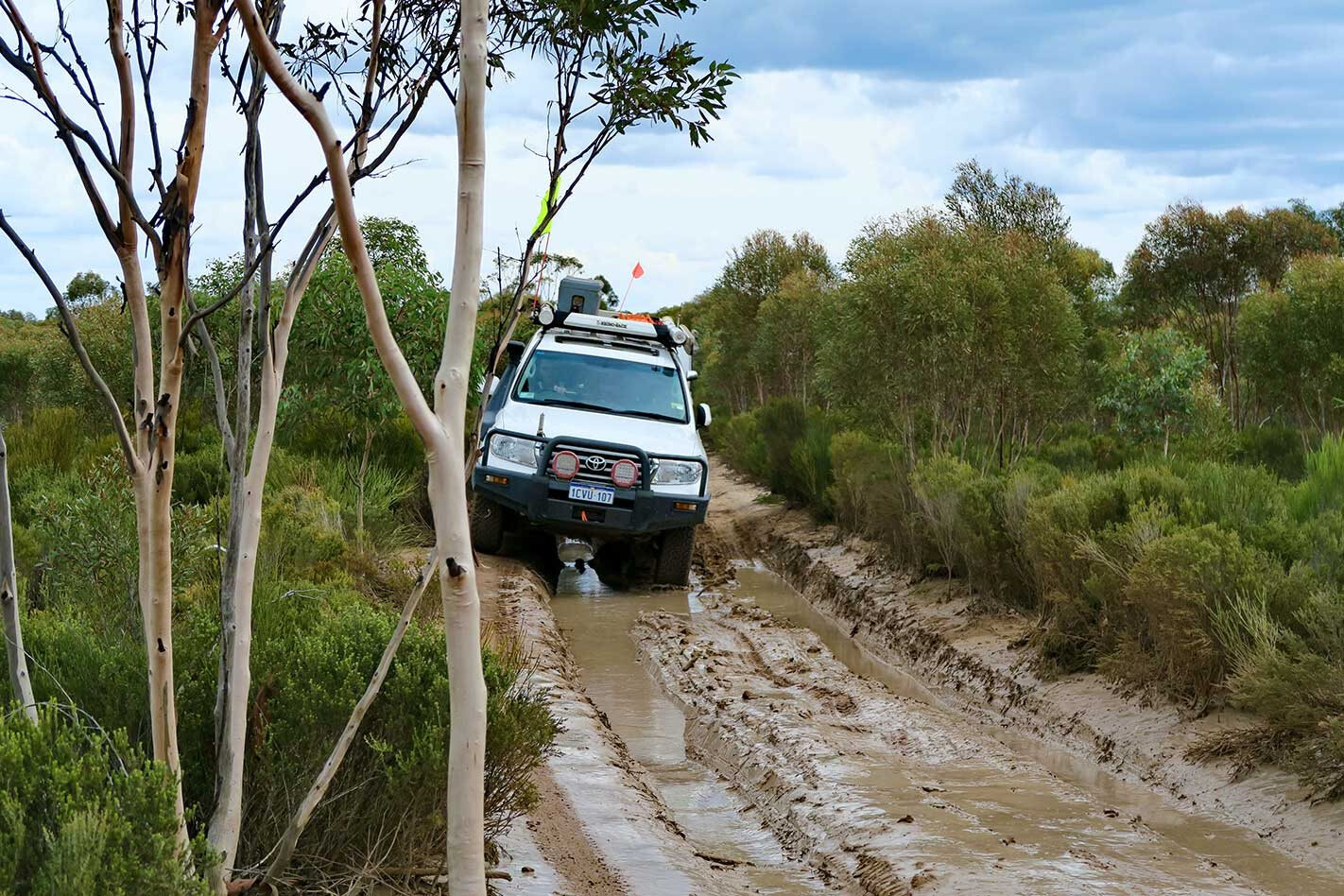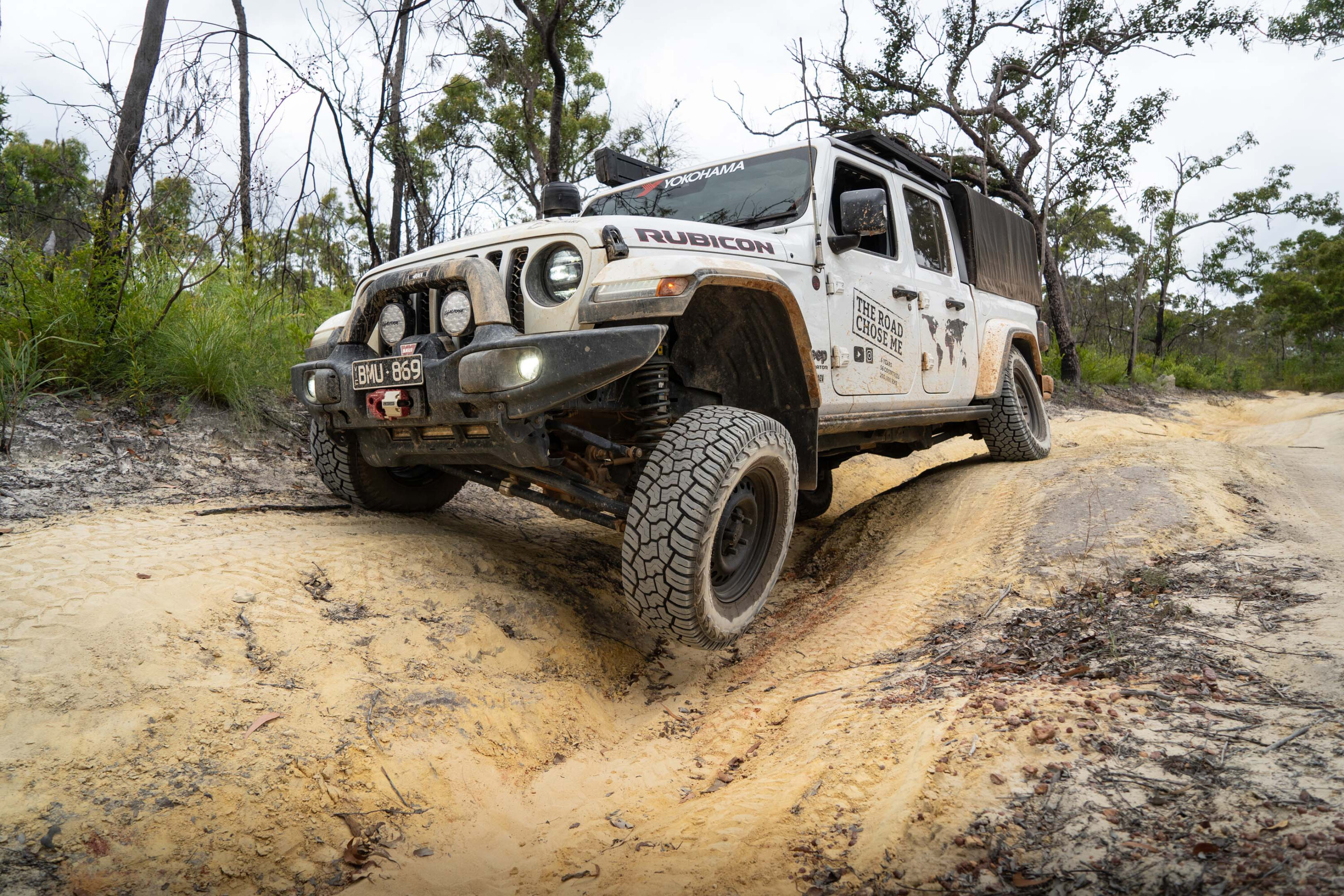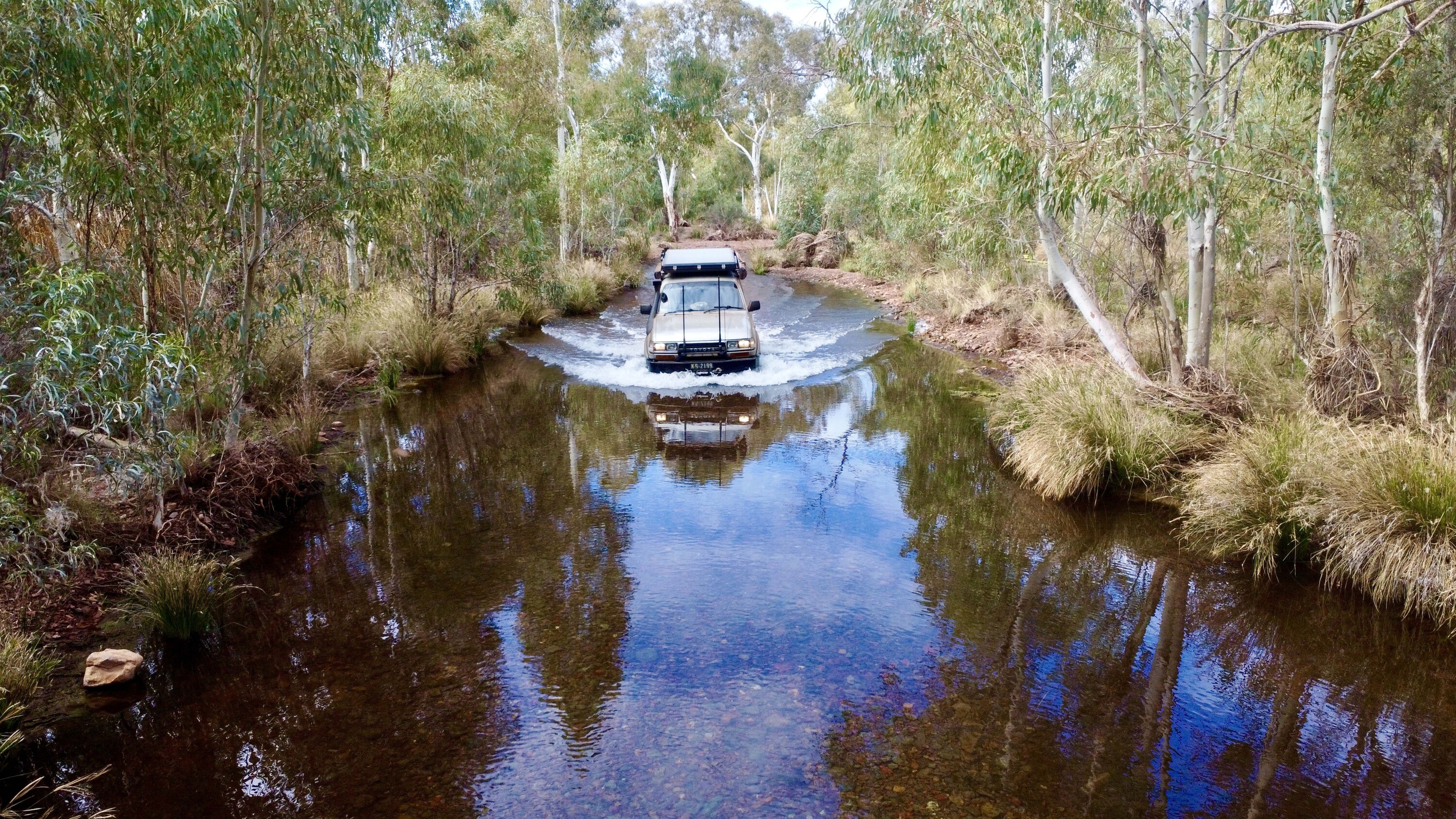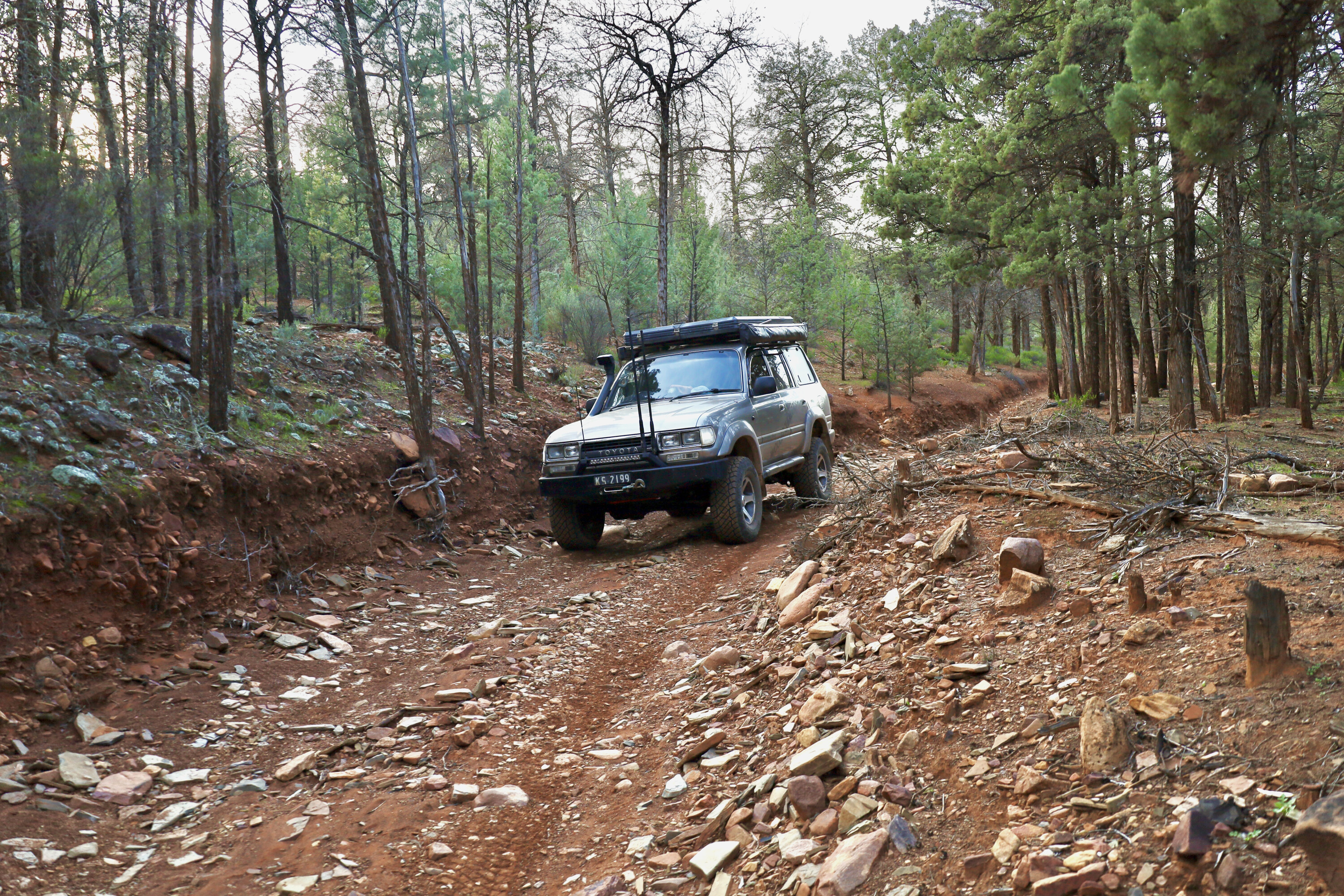The Holland Track was originally established in 1893 by John Holland and his team as a shortcut from the Western Australian south coast to the booming goldfields in Coolgardie.
In little more than two months his team cut a cart track of more than 500km through the previously impenetrable bush. It was used immediately by thousands of optimistic diggers joining the rush north. Within a few years the railway was extended to Coolgardie and this put an end to regular goldfield traffic on the Holland Track. It soon fell into disrepair; the southern end was absorbed into farming land while north of the rabbit-proof fence was all but lost back to the scrub.
Fast forward almost a century and thanks to the efforts of Broomehill farmer Graeme Newbey and researcher Adrian Malloy, the northern end of the track was re-traced and cleared. In 1993, Graeme led a 4×4 Centenary Expedition along the re-established track to mark the centenary of Holland’s historic journey. The Holland Track has since been adopted by the Toyota Land Cruiser Club which maintains the track for the enjoyment of all recreational four-wheel drivers.

The town of Hyden, 330km east of Perth, marks the starting point for most adventurers set on tackling the Holland Track. The town, though small in population, boasts a good range of services due to its proximity to Wave Rock which attracts more than 100,000 visitors annually. Fuel is available but is the last you will see until Coolgardie, so top up the tanks. A range of approximately 450km is recommended.
The entry point to Holland Track is located 56km east of Hyden, where it intersects Hyden-Norseman Road. There is a large gravel clearing near the entrance which contains a commemorative plaque to John Holland and provides a good space to air-down your tyres and put up the sand flag.
You won’t encounter sand dunes, but visibility along the winding, single-lane track is poor due to the height of the surrounding scrub. The Holland Track can be entered from either end, so you need to be on the look-out for oncoming traffic at all times. A sand flag will increase your visibility to any oncoming traffic.
The first 40km of the track is usually the section which is in the worst condition. It typically has some very deep ruts to contend with, and of course when these ruts are filled with water it can become a very messy affair. There are often bypass tracks around the worst of them, though it’s sometimes hard to choose which is the better option. Due to this mud it’s a good idea to travel in a convoy, as most of the surrounding trees are small and no good as winch anchors.
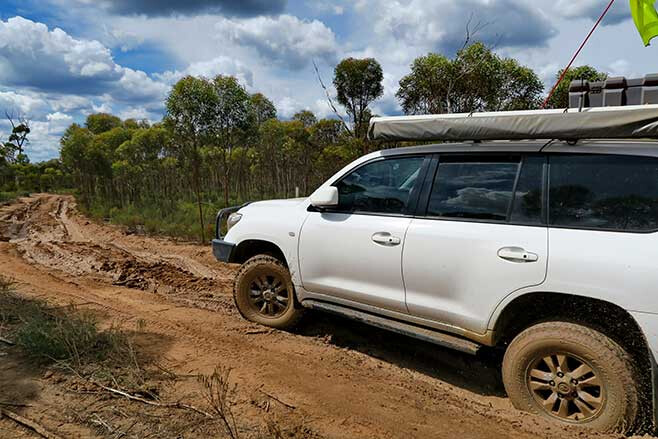
If dealing with mud isn’t your idea of a good time, then this section can be avoided entirely by entering the Holland Track via the Southern Cross-Forrestania Road which T-junctions with the track near Mount Holland. You’ll still encounter some mud if it has rained recently, but nothing to the degree of the first section.
Apart from getting stuck in the mud, the other main danger along the Holland Track is tyre damage. Much of the surrounding scrub has been burnt at various times and there is an abundance of sharp, fire-hardened stakes around (along with plenty of notorious mallee roots) just waiting to stake your tyres’ sidewalls.
All that aside, you’ll be travelling through a superb wilderness region with an ever-changing landscape. It’s pretty much virgin bush land out past the rabbit-proof fence and there are many points of interest to be found along the track.
At regular intervals you will encounter huge granite outcrops that catch the rain and, in the past, provided an important source of water for early travellers. It’s important to stick to the marked tracks when navigating near these outcrops, both from an environmental perspective and to reduce your risk of getting bogged if you break through the dry crust.
The modern and recently upgraded State Barrier Fence will also be encountered when travelling this way. The fence aims to exclude invasive species, including wild dogs, from the state’s agricultural areas in the South-West Land Division. A fence with an open gate defeats the purpose of the fence, so make sure you shut the gate behind you.
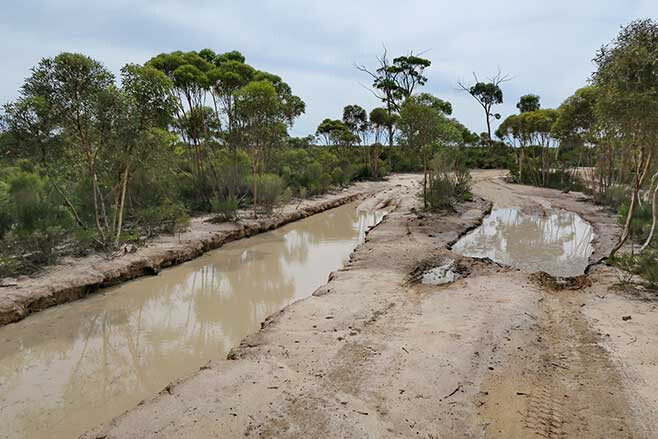
Malleefowl used to be common throughout the Wheatbelt area, though the clearing of land has destroyed much of their habitat. There is, however, a large and reportedly active malleefowl nest right at the edge of the track, marked with bollards and an information board. Further along you’ll find the box with the official track visitor’s book surrounded by an eclectic shrine of offerings.
The track is only around 250km in length, though given your average speed is likely to be around 30km/h you’ll be camping out at some stage along the way. There are a couple of designated campsites for larger groups, though there are no facilities at any of the sites until you reach Victoria Rock. If you are in a smaller group then there are endless campsite options to choose from along the track.
Just past Thursday Rock is the end of the 4WD section of the track and it reverts to a well-maintained gravel road heading towards Coolgardie. Continuing 40km past Coolgardie gets you to Kalgoorlie-Boulder which touts itself as Australia’s largest outback city, with the infrastructure and services to match; a good place to clean up and restock for the onward journey.

